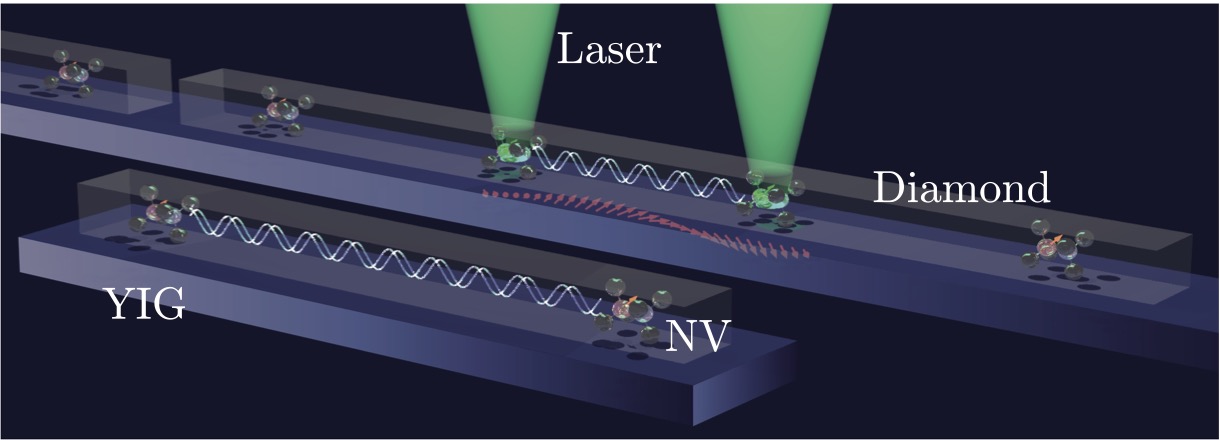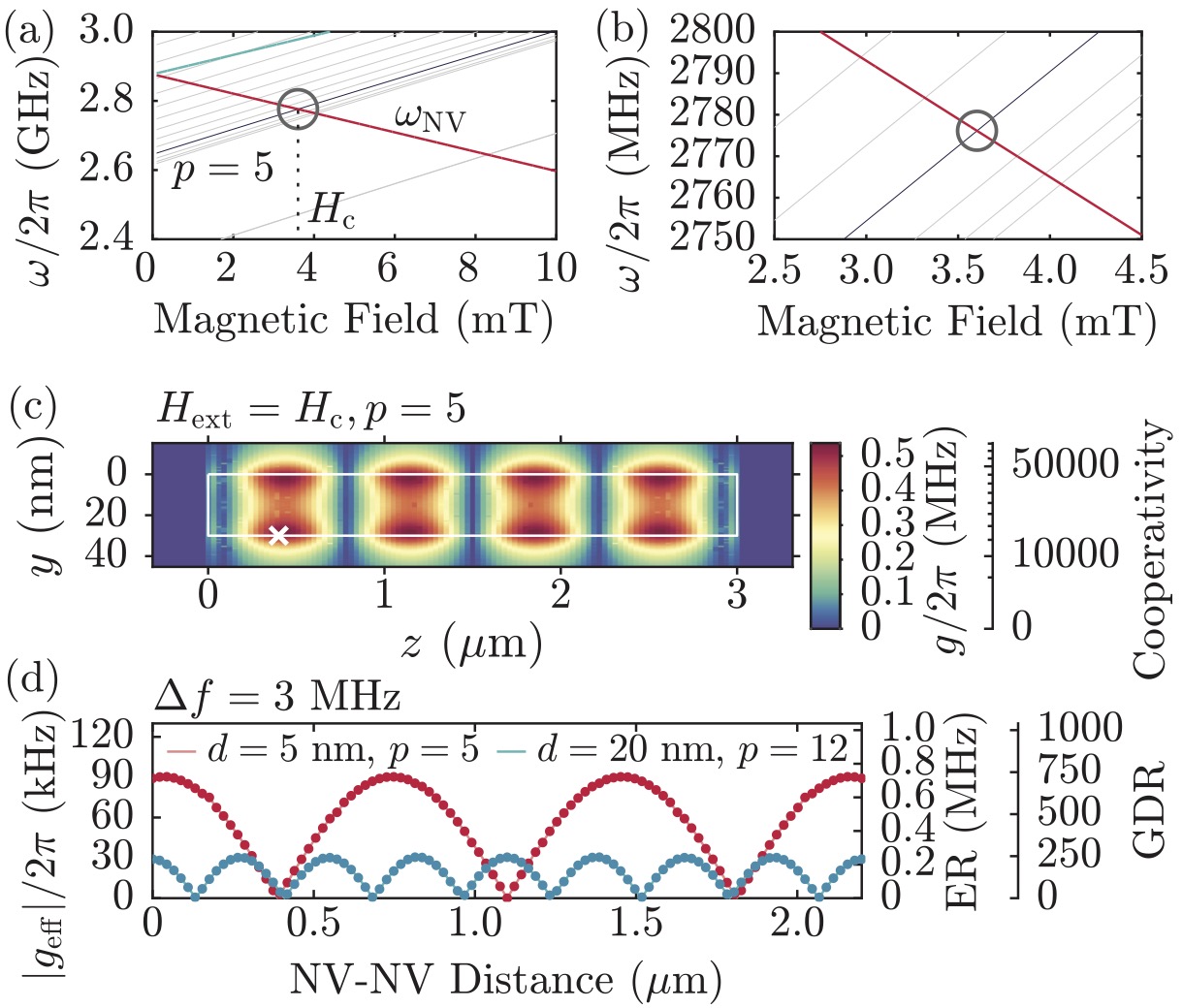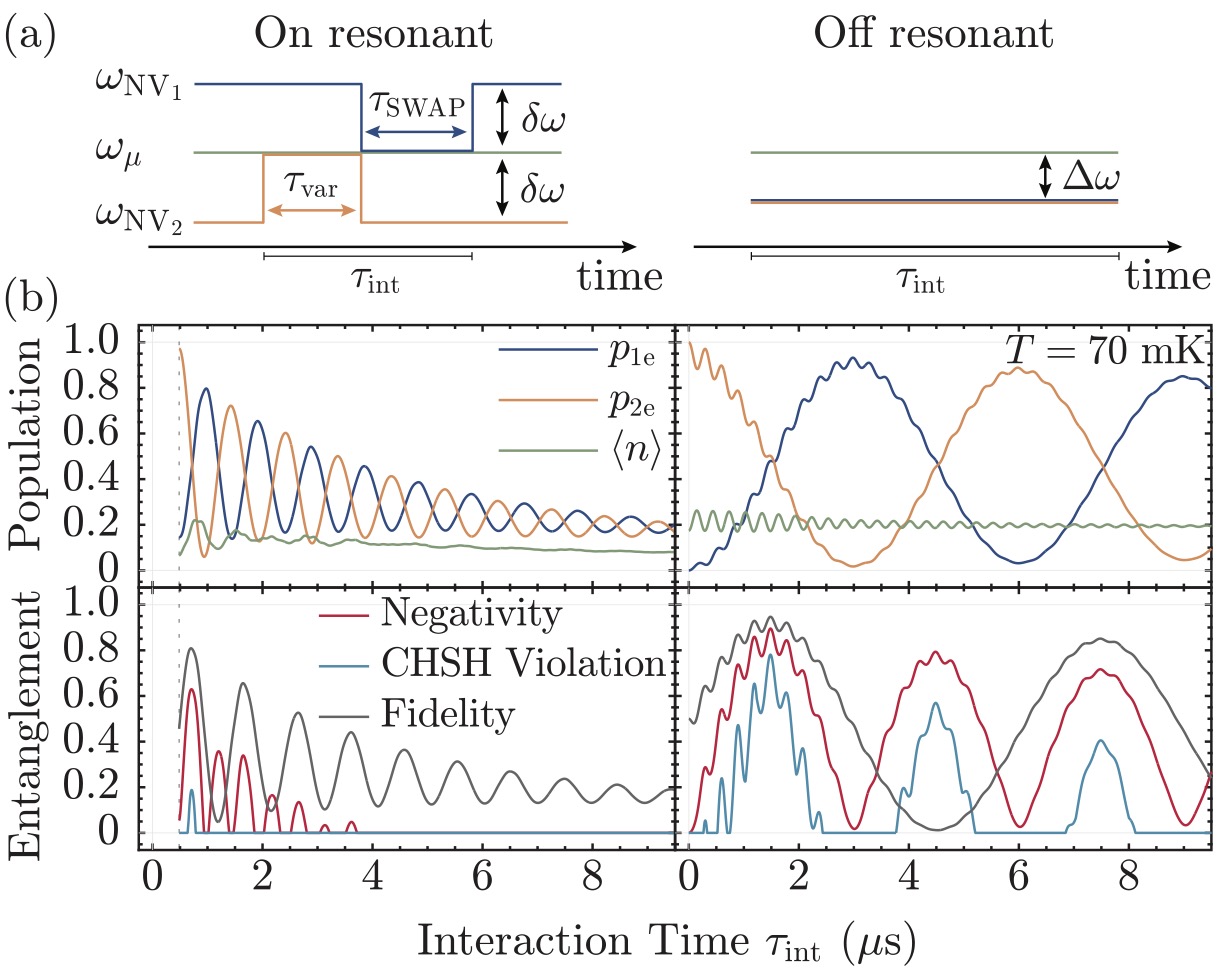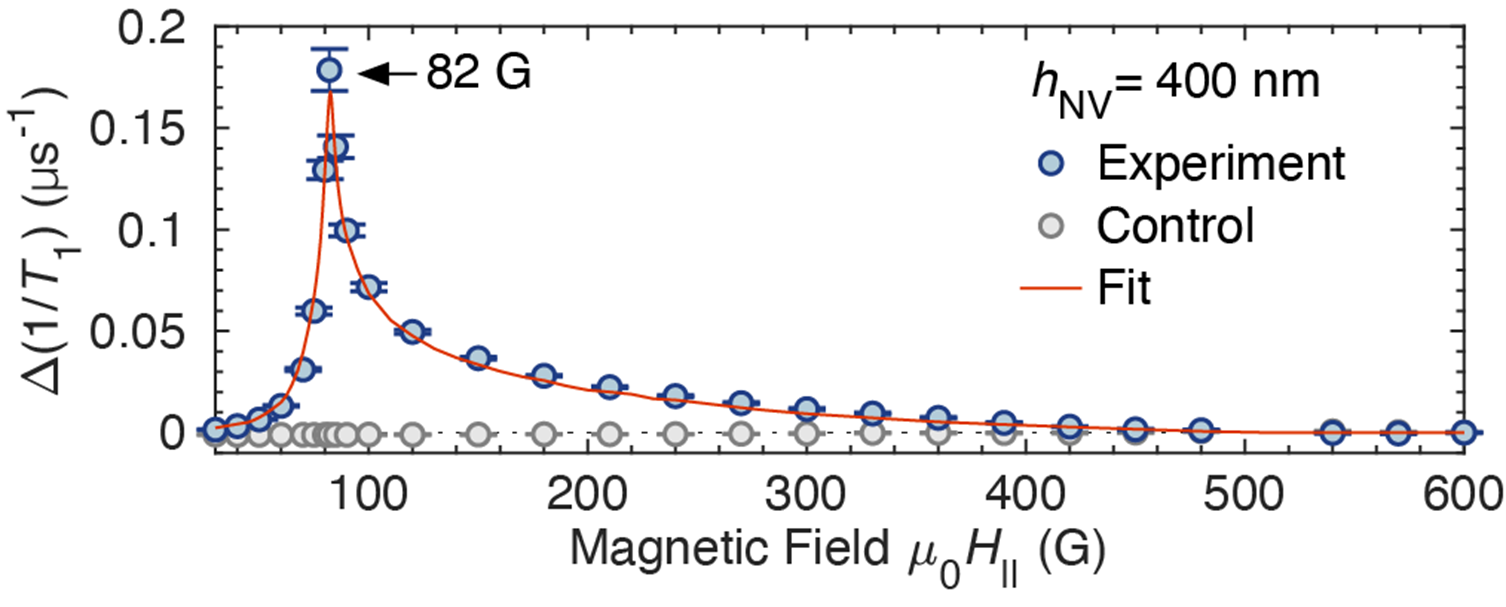The ability to manipulate entanglement between multiple spatially separated qubits is essential for quantum-information processing. Although nitrogen-vacancy (NV) centers in diamond provide a promising qubit platform, developing scalable two-qubit gates remains a well-known challenge. To this end, magnon-mediated entanglement proposals have attracted attention due to their long-range spin-coherent propagation. Optimal device geometries and gate protocols of such schemes, however, have yet to be determined. We explore the potential for magnon-mediated coupling between NV centers.
We consider the interactions between two optically addressable NV centers positioned above waveguides made of Yttrium Iron Garnet (YIG), a widely studied ferrimagnet. Infinite and finite geometries are studied, as well as on- and off-resonant coupling protocols. Thermal excitations in YIG will decohere the NV center, reducing the fidelity of operations. Our protocols account for this with off-resonant operations where NV centers interact via virtual magnons.

In the following figure, we show computed NV-NV couplings under realizable geometries and temperatures. We tune the NV close to resonance with a spin wave mode and calculate the expected coupling between an NV and the spin wave mode for different NV locations.

We then calculate the NV population and entanglement achievable for different protocols and interaction times. We observe that the virtual-magnon exchange (off-resonant) protocol results in larger amplitude oscillations in the NV centers’ excited-state populations and higher fidelity under the parameters and the temperature used in the simulation.

Details can be found in our manuscript:
M. Fukami, D. R. Candido, D.D. Awschalom, M. E. Flatte, PRX Quantum, 2 040314 (2021).
In a follow-up experimental work we quantify the magnon-mediated NV-NV interaction by combining qubit dissipation measurements with quantitative theoretical analysis. We measure the magnon-induced self energy of NV centers in an ensemble placed in proximity to a bulk film of YIG, shown schematically in the figure below.

By measuring the NV spin relaxation versus magnetic field, we tune the NV centers into resonance with magnon modes (see calculated dispersions and densities of state), creating an incoherent relaxation channel. Our data fits to the analytical model presented in our previous work and allows us to extract the imaginary part of the NV self energy using the fluctuation dissipation relation. We then calculate the real (coherent) part of the self energy through the Kramers-Kronig relation, finding magnon-mediated coupling strengths of around 1Hz at 1µm separation, far larger than the dipolar coupling. These results provide a starting point for engineering magnonic systems to realize our proposed entanglement schemes.


Details can be found in our manuscript:
M. Fukami, J. C. Marcks, D. R. Candido, D.D. Awschalom, PNAS, 121 (2) e2313754120 (2024).
